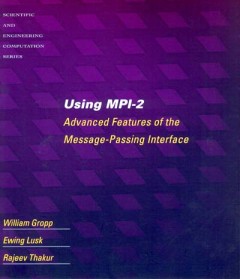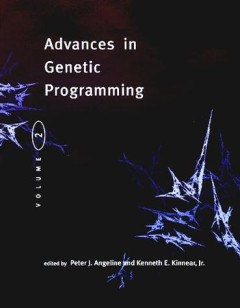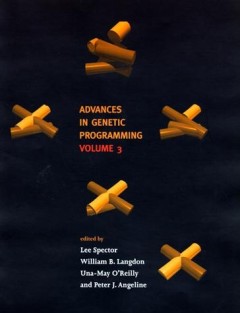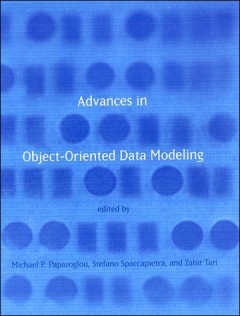Filter by

Using MPI-2 : Advanced Features of the Message-Passing Interface
Using MPI is a completely up-to-date version of the authors' 1994 introduction to the core functions of MPI. It adds material onthe new C++ and Fortran 90 bindings for MPI throughout the book.OCLC-licensed vendor bibliographic record.
- Edition
- 2nd ed.
- ISBN/ISSN
- 9780262288040
- Collation
- 1 online resource (407 pages).
- Series Title
- -
- Call Number
- -

Using OpenMP—The Next Step: Affinity, Accelerators, Tasking, and SIMD
A guide to the most recent, advanced features of the widely used OpenMP parallel programming model, with coverage of major features in OpenMP 4.5.This book offers an up-to-date, practical tutorial on advanced features in the widely used OpenMP parallel programming model. Building on the previous volume, Using OpenMP: Portable Shared Memory Parallel Programming (MIT Press), this book goes beyond…
- Edition
- -
- ISBN/ISSN
- 9780262344012
- Collation
- 1 online resource (xxi, 365 pages) :illustrations.
- Series Title
- -
- Call Number
- -

Concurrent constraint programming
Concurrent Constraint Programming introduces a new and rich class of programming languages based on the notion of computing with partial information, or constraints, that synthesize and extend work on concurrent logic programming and that offer a promising approach for treating thorny issues in the semantics of concurrent, nondeterministic programming languages. Saraswat develops an elegant and…
- Edition
- -
- ISBN/ISSN
- 9780262290975
- Collation
- 1 online resource (xl, 486 pages) :illustrations.
- Series Title
- -
- Call Number
- -

Connectionist symbol processing
"A Bradford book.""Reprinted from Artificial intelligence, an international journal, volume 46, numbers 1-2, 1990"--Title page verso.The six contributions in Connectionist Symbol Processing address the current tension within the artificial intelligence community between advocates of powerful symbolic representations that lack efficient learning procedures and advocates of relatively simple lear…
- Edition
- -
- ISBN/ISSN
- 9780262256360
- Collation
- 1 online resource (262 pages) :illustrations.
- Series Title
- -
- Call Number
- -

Mechanisms :new media and the forensic imagination
"In Mechanisms, Matthew Kirschenbaum examines new media and electronic writing against the textual and technological primitives that govern writing, inscription, and textual transmission in all media: erasure, variability, repeatability, and survivability. Mechanisms is the first book in its field to devote significant attention to storage--the hard drive in particular--arguing that understandi…
- Edition
- -
- ISBN/ISSN
- 9780262302746
- Collation
- 1 online resource (xvii, 296 pages) :illustrations
- Series Title
- -
- Call Number
- -

Advances in genetic programming.
"A Bradford book."Available through MITCogNet.There is increasing interest in genetic programming by both researchers and professional software developers. These twenty-two invited contributions show how a wide variety of problems across disciplines can be solved using this new paradigm.There is increasing interest in genetic programming by both researchers and professional software developers.…
- Edition
- -
- ISBN/ISSN
- 9780262277181
- Collation
- 1 online resource (ix, 476 pages) :illustrations.
- Series Title
- -
- Call Number
- -

Advances in genetic programming.
Genetic programming, a form of genetic algorithm that evolves programs and program-like executable structures, is a new paradigm for developing reliable, time- and cost-effective applications. The second volume of Advances in Genetic Programming highlights many of the most recent technical advances in this increasingly popular field.Genetic programming, a form of genetic algorithm that evolves …
- Edition
- -
- ISBN/ISSN
- 9780262290791
- Collation
- 1 online resource (xi, 538 pages) :illustrations.
- Series Title
- -
- Call Number
- -

Coordinating Distributed Objects: An Actor-Based Approach to Synchronization
Coordinating Distributed Objects presents a novel object-oriented methodology to simplify the construction of distributed software systems. The methodology is based on a programming construct, called synchronizer, that allows the coordination of distributed application components to be programmed in a modular fashion and at a high level of abstraction. The methodology offers new insight into th…
- Edition
- -
- ISBN/ISSN
- 9780262273299
- Collation
- 1 online resource (xxii, 195 pages) :illustrations
- Series Title
- -
- Call Number
- -

Advances in genetic programming Volume 3
"A Bradford book."OCLC-licensed vendor bibliographic record.
- Edition
- -
- ISBN/ISSN
- 9780262284127
- Collation
- 1 online resource (476 pages) :illustrations.
- Series Title
- -
- Call Number
- -

Advances in object-oriented data modeling
Until recently, information systems have been designed around different business functions, such as accounts payable and inventory control. Object-oriented modeling, in contrast, structures systems around the data--the objects--that make up the various business functions. Because information about a particular function is limited to one place--to the object--the system is shielded from the effe…
- Edition
- -
- ISBN/ISSN
- 9780262281218
- Collation
- 1 online resource (xxv, 367 pages) :illustrations.
- Series Title
- -
- Call Number
- -
 Computer Science, Information & General Works
Computer Science, Information & General Works  Philosophy & Psychology
Philosophy & Psychology  Religion
Religion  Social Sciences
Social Sciences  Language
Language  Pure Science
Pure Science  Applied Sciences
Applied Sciences  Art & Recreation
Art & Recreation  Literature
Literature  History & Geography
History & Geography